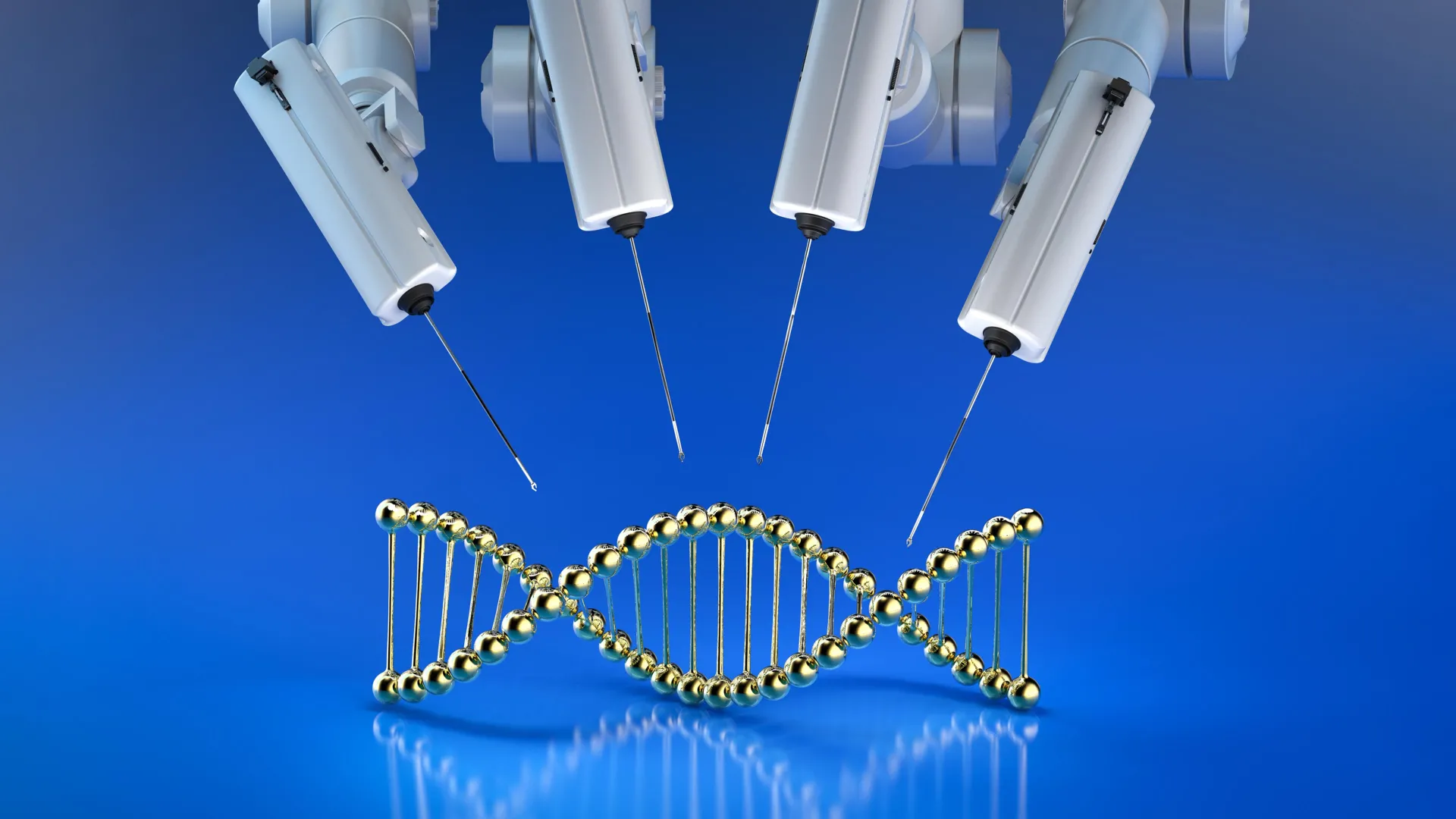Scientists just made gene editing far more powerful
A breakthrough retron gene-editing system could make universal and efficient gene therapy a reality.
- Date:
- October 25, 2025
- Source:
- University of Texas at Austin
- Summary:
- Scientists at The University of Texas at Austin have developed a revolutionary gene-editing method using bacterial retrons that can correct multiple disease-causing mutations at once. Unlike traditional tools limited to one or two mutations, this retron-based system replaces large defective DNA regions, dramatically improving efficiency and inclusivity for patients with complex disorders like cystic fibrosis.
- Share:

Some inherited diseases, including cystic fibrosis, hemophilia, and Tay Sachs disease, involve multiple genetic mutations within a person's DNA. Even two individuals with the same condition may have different sets of mutations. Because of this complexity, creating gene therapies that work broadly across all patients with a given disorder has been extremely difficult.
A New and More Efficient Gene Editing Breakthrough
Scientists at The University of Texas at Austin have developed a more precise and efficient gene-editing approach that can correct several disease-causing mutations at once in mammalian cells. The technique also successfully repaired mutations linked to scoliosis in zebrafish embryos.
This new approach is powered by retrons, genetic elements originally found in bacteria that help them defend against viral infections. Researchers have now used retrons for the first time to correct a disease-related mutation in vertebrates, offering fresh hope for the development of new gene therapies for human disorders.
"A lot of the existing gene-editing methods are restricted to one or two mutations, which leaves a lot of people behind," said Jesse Buffington, a graduate student at UT and co-author of a new paper in Nature Biotechnology. "My hope, and what drives me, is to develop a gene-editing technology that's much more inclusive of people who might have more unique disease-causing mutations, and that using retrons will be able to expand that impact onto a much broader patient population."
Buffington led the research alongside Ilya Finkelstein, a professor of molecular biosciences at UT, with support from Retronix Bio and the Welch Foundation.
Replacing Faulty DNA With Healthy Sequences
The retron-based system can swap out long sections of defective DNA for healthy ones. This means a single retron "package" can potentially correct many mutations within the same stretch of DNA, rather than targeting one specific defect at a time.
"We want to democratize gene therapy by creating off-the-shelf tools that can cure a large group of patients in one shot," Finkelstein said. "That should make it more financially viable to develop and much simpler from a regulatory standpoint because you only need one FDA approval."
While retrons have been used before in mammalian cells, previous attempts were highly inefficient, correcting only about 1.5% of targeted cells. The UT Austin team's method dramatically improved this efficiency, successfully inserting healthy DNA into around 30% of target cells. Researchers believe they can push this number even higher as the technique evolves.
Another key advantage is that the retron system can be delivered into cells as RNA enclosed in a lipid nanoparticle. These nanoparticles are specifically engineered to overcome the delivery problems faced by many traditional gene-editing systems.
Applying the Technique to Cystic Fibrosis
The research team is now adapting their approach to treat cystic fibrosis (CF), a life-threatening disorder caused by mutations in the CFTR gene. These mutations lead to thick mucus buildup in the lungs, resulting in chronic infections and long-term lung damage.
UT Austin recently received a grant from Emily's Entourage, a non-profit organization dedicated to finding treatments for the roughly 10% of people with CF who do not benefit from current therapies. The researchers are beginning work on replacing faulty regions of the CFTR gene in laboratory models that mimic CF symptoms and, later, in airway cells derived from patients.
"Traditional gene-editing technologies work best with single mutations and are expensive to optimize, so gene therapies tend to focus on the mutations that are the most common," Buffington said. "But there are over a thousand mutations that can cause CF. It's not financially feasible for companies to develop a gene therapy for, say three people. With our retron-based approach, we can snip out a whole defective region and replace it with a healthy one, which can impact a much larger part of the CF population."
A separate grant from the Cystic Fibrosis Foundation will support similar work targeting the region of the CFTR gene that includes the most common CF-causing mutations.
Along with Buffington and Finkelstein, the research team includes Hung-Che Kuo, Kuang Hu, You-Chiun Chang, Kamyab Javanmardi, Brittney Voigt, Yi-Ru Li, Mary E. Little, Sravan K. Devanathan, Blerta Xhemalçe, and Ryan S. Gray. Their work marks an important step toward gene therapies that are more adaptable, efficient, and inclusive for patients facing complex genetic diseases.
Story Source:
Materials provided by University of Texas at Austin. Note: Content may be edited for style and length.
Journal Reference:
- Jesse D. Buffington, Hung-Che Kuo, Kuang Hu, You-Chiun Chang, Kamyab Javanmardi, Brittney Voigt, Yi-Ru Li, Mary E. Little, Sravan K. Devanathan, Blerta Xhemalçe, Ryan S. Gray, Ilya J. Finkelstein. Discovery and engineering of retrons for precise genome editing. Nature Biotechnology, 2025; DOI: 10.1038/s41587-025-02879-3
Cite This Page: